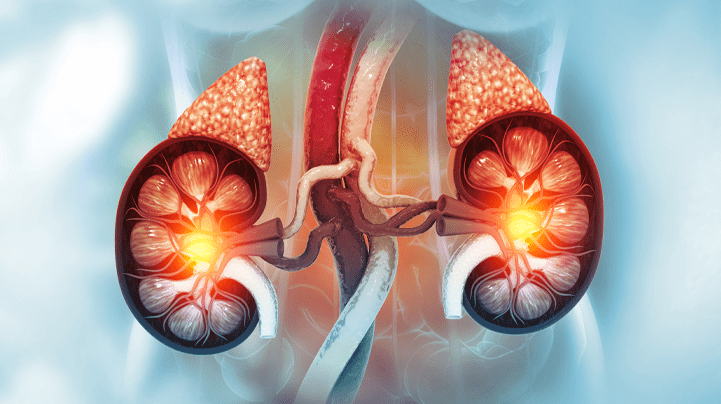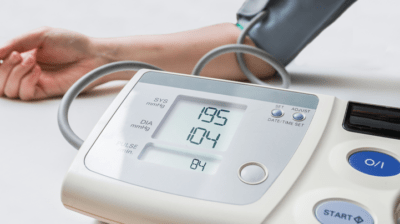Wybierz język:
Wywiad z Roberto Fontaną – Global Product Specialist w Immunodiagnostic Systems (IDS)
Kortyzol to hormon steroidowy produkowany przez nadnercza. Kiedy ten hormon jest wytwarzany oraz jakie są jego główne funkcje w organizmie?
Kortyzol jest głównym glukokortykoidem. Jego uwalnianie z nadnerczy jest kontrolowane przez hormon adrenokortykotropowy (ACTH) poprzez oś podwzgórzowo-przysadkowo-nadnerczową w odpowiedzi na stres, sen, a także stany chorobowe. Wydzielanie kortyzolu podlega dobowemu rytmowi – poziom tego hormonu jest najwyższy wczesnym rankiem, a następnie obniża się w ciągu dnia.
Receptory glukokortykoidowe są obecne w wielu różnych tkankach i rodzajach komórek. W związku z tym skutki fizjologiczne działania kortyzolu są bardzo rozległe. Kortyzol – poprzez zwiększenie glukoneogenezy (synteza glukozy) i podwyższenie poziomu glukozy we krwi – reguluje metabolizm glukozy. Sprzyja także mobilizacji tłuszczów. Ponadto moduluje odpowiedź immunologiczną poprzez działanie przeciwzapalne. Warto również wspomnieć, że kortyzol wpływa na reakcję układu naczyniowego, na substancje wazoaktywne, w tym angiotensynę II.
W przypadku dysfunkcji nadnerczy, np. w chorobie Addisona lub zespole Cushinga, poziomy kortyzolu są zaburzone. Jak diagnozować zaburzenia pracy nadnerczy? Jakie parametry powinny być monitorowane przy podejrzeniu tych dwóch chorób?
Fizjologia kortyzolu może ulegać zmianie na dwa sposoby: jego poziom może być albo podwyższony, albo obniżony. W obu tych przypadkach dwa podstawowe parametry, które powinno się badać, to kortyzol i ACTH.
Nadmierne wydzielanie kortyzolu – czyli hiperkortyzolizm – to stan nazywany zespołem Cushinga (CS, ang. Cushing’s syndrome). Charakteryzuje się objawami, które mogą obejmować przyrost masy ciała, wysokie ciśnienie krwi, powstawanie spontanicznych siniaków i twarz w kształcie księżyca. Przy podejrzeniu zespołu Cushinga zaleca się wykonanie co najmniej jednego pomiaru poziomu kortyzolu i potwierdzenie hiperkortyzolizmu. Wysoki poziom kortyzolu stanowi podstawę do rozpoznania CS. Ocena poziomu ACTH pozwala następnie ustalić, czy hiperkortyzolizm jest spowodowany wysokim poziomem ACTH we krwi – jak na przykład w obecności gruczolaka przysadki mózgowej (choroba Cushinga) lub guza wydzielającego ACTH zlokalizowanego poza przysadką mózgową – czy też jest niezależny od ACTH, a jest wynikiem nadmiernego wydzielania przez nadnercza, na przykład z powodu guza nadnerczy.
Z kolei nienaturalnie niskie poziomy kortyzolu (hipokortyzolizm) są charakterystyczne dla niewydolności nadnerczy, powodując objawy takie, jak zmęczenie, utrata wagi czy osłabienie mięśni. W badaniach przesiewowych w kierunku niewydolności nadnerczy w pierwszej kolejności wykonuje się oznaczenie poziomu kortyzolu we krwi – zarówno w próbce porannej, jak i po stymulacji ACTH. Zbyt niskie poziomy kortyzolu wskazują na prawdopodobieństwo niewydolności nadnerczy. Następnie ocena stężeń ACTH pozwala ustalić, czy hipokortyzolizm jest wynikiem dysfunkcji nadnerczy (choroba Addisona) czy niewystarczającego poziomu ACTH (wtórna niewydolność nadnerczy).
Jakiego rodzaju próbki są wymagane do badania kortyzolu? Dlaczego w badaniach poziomu tego hormonu ważne jest korzystanie nie tylko z próbek krwi?
Istnieje wiele testów do oceny poziomu kortyzolu w celu przesiewowego badania w kierunku zespołu Cushinga (CS). Wytyczne opracowane przez Endocrine Society szczególnie zalecają trzy rodzaje badań: badanie kortyzolu we krwi po hamowaniu deksametazonem, badanie kortyzolu w moczu oraz badanie kortyzolu w ślinie późnym wieczorem. Chociaż wszystkie te trzy testy są odpowiednie do przesiewowego badania w kierunku CS, każdy z nich ma swoje ograniczenia.
Na przykład test hamowania deksametazonem obejmuje podanie deksametazonu – glikokortykosteroidu, który hamuje wydzielanie ACTH z przysadki – a następnie pomiar kortyzolu we krwi lub osoczu. Jednakże klirens deksametazonu może być przyspieszony lub zredukowany przez leki bądź stany chorobowe, co prowadzi do zniekształcenia odpowiedzi kortyzolu.
Inny przykład ograniczeń wynika z faktu, że chociaż tylko wolna forma kortyzolu we krwi jest bioaktywna, większość krążącego kortyzolu jest związana z białkiem transportującym zwanym globuliną wiążącą kortykosteroidy (CBG, ang. corticosteroid-binding globulin). Warunki, które modyfikują zdolność wiązania CBG, mogą zmieniać całkowity poziom kortyzolu we krwi i moczu, bez wpływu na wolną, bioaktywną formę, co prowadzi do błędnych wyników diagnostycznych.
Warto również mieć na uwadze, że wartości referencyjne dla stężenia kortyzolu są różne. Dlatego zarówno wyniki badań próbek pobranych od różnych osób, jak i wyniki kilku badań wykonanych dla jednego pacjenta mogą się miedzy sobą różnić.
Z uwagi na ograniczenia każdego z testów i biologiczną zmienność wytyczne Endocrine Society w celu postawienia diagnozy CS zalecają przeprowadzenie co najmniej dwóch różnych testów kortyzolu, których wyniki są z sobą zgodne. W przeciwnym razie pomiar kortyzolu w moczu lub ślinie jest zazwyczaj uważany za mało przydatny do przesiewowego badania na obecność niedoczynności nadnerczy, ponieważ niskie poziomy kortyzolu są często obserwowane u osób zdrowych, co utrudnia postawienie diagnozy.
Jakie produkty oferuje IDS do diagnostyki zaburzeń funkcji nadnerczy?
W skład Panelu do diagnostyki funkcji nadnerczy IDS wchodzą trzy testy do oznaczania poziomu kortyzolu: IDS Cortisol do oznaczania kortyzolu w osoczu i surowicy, IDS Salivary Cortisol do wykonywania oznaczeń w ślinie oraz IDS Urinary cortisol do oznaczeń w moczu. Panel ten obejmuje wszystkie testy zalecane w wytycznych Endocrine Society do przesiewowego badania zespołu Cushinga i niedoczynności nadnerczy. Ponadto w skład panelu wchodzi niedawno wprowadzony test IDS ACTH II, który odgrywa kluczową rolę w diagnostyce różnicowej choroby leżącej u podstaw stanu hiper- lub hipokortyzolemii.
Testy IDS do pomiaru kortyzolu i ACTH zapewniają najwyższą precyzję i czułość. Ale co najważniejsze, łączą się w najbardziej kompleksową zautomatyzowaną ofertę na rynku do przesiewowego badania stanu funkcji nadnerczy.
Testy firmy Immunodiagnostic Systems są wykonywane na zautomatyzowanej platformie random access. Jakie korzyści wiążą się z zastosowaniem tej techniki diagnostycznej w porównaniu z innymi?
W pełni automatyczne platformy random access IDS – IDS-iSYS i IDS-i10 zapewniają laboratorium medycznym wymaganą elastyczność w badaniu próbek, umożliwiając natychmiastowe przystąpienie do ich analizy. Dodatkowo, system IDS optymalizuje kolejność przeprowadzanych testów, gwarantując najlepszy czas wykonania badań. Ta funkcjonalność pozwala na optymalizację procesów laboratoryjnych.
Bardzo dziękuję za rozmowę.
Rozmawiał: Tomasz Janiszewski
Advanced Endocrinological Tests by IDS: Innovative Approaches to Adrenal Function
Interview with Roberto Fontana – Global Product Specialist at Immunodiagnostic Systems (IDS)
Cortisol is a steroid hormone produced by the adrenal glands. When is this hormone produced? What are its main functions in the body?
Cortisol is the main glucocorticoid. Its release from the adrenal glands is controlled by the adrenocorticotropic hormone (ACTH) via the hypothalamic-pituitary-adrenal axis in response to stress, sleep and disease conditions. In addition, cortisol secretion follows a diurnal rhythm so that the blood levels of the hormone are highest is the early morning and then decrease during the day.
Glucocorticoid receptors are expressed in a plethora of different tissues and cell types. It is therefore not surprising that cortisol exerts a very wide range of physiological effects. Among the most notable ones, cortisol regulates glucose metabolism by enhancing the gluconeogenesis (synthesis of glucose) and by increasing the blood glucose levels. Cortisol also favors mobilization of fats. Further, it modulates the immune response with an anti-inflammatory action. Lastly, it is useful to mention that cortisol modulates the response of the vascular system to vasoactive chemicals, including angiotensin II.
In the case of adrenal gland dysfunction, e.g. in Addison’s disease or Cushing’s syndrome, cortisol levels are disturbed. How is adrenal function diagnosed? What parameters should be monitored when suspecting these two diseases?
The physiology of cortisol can be altered in two ways: it can be either abnormally increased or abnormally reduced. In both cases, the two primary analytes to test are cortisol and ACTH.
The excess of cortisol secretion – or hypercortisolism – is a condition called Cushing’s syndrome (CS) and characterized by symptoms that can include weight gain, high blood pressure, spontaneous bruising and a moon-shaped face. When Cushing’s syndrome is suspected one or more tests are recommended to assess the levels of cortisol and confirm hypercortisolism. If cortisol is found to be high, CS is diagnosed. The assessment of ACTH allows then to differentiate whether the hypercortisolism is due to high levels of ACTH in the blood – as, for instance, in the presence of a pituitary adenoma (Cushing’s disease) or an ectopic ACTH secreting tumour – or it is ACTH independent and it is hence due to an over secretion inherent to the adrenal gland, for instance due to an adrenal tumour.
On the other hand, abnormally low levels of cortisol (hypocortisolism) are the hallmark of adrenal insufficiency, causing symptoms from fatigue to weight loss and muscle weakness. The first line of screening for adrenal insufficiency involves assessing cortisol levels in the blood, either by measuring it a morning sample or after stimulation by ACTH administration. Suppressed levels of cortisol indicate that adrenal insufficiency is likely. Afterwards, assessing ACTH concentrations enable to differentiate whether the hypocortisolism is due to a dysfunction of the adrenal glands (Addison’s disease) or to insufficient levels of ACTH (secondary adrenal insufficiency).
What kind of samples does cortisol testing require? Why is it important to rely not only on blood samples for this hormone?
Multiple tests are available to assess cortisol for the screening of CS. The guidelines defined by the Endocrine Society recommend three tests in particular: the blood cortisol test after dexamethasone suppression, the urinary free cortisol test and the late-night salivary cortisol test. While the three of them are suitable for CS screening, each one presents caveats.
For example, the dexamethasone suppression test involves the administration of dexamethasone – a glucocorticoid which inhibits the secretion of ACTH from the pituitary gland – followed by the measurement of cortisol in serum or plasma. However, dexamethasone clearance can be accelerated or reduced by medications or medical conditions, leading to a biased cortisol response.
Another example comes from the fact that, while only the free component of cortisol in the blood is bioactive, most of the circulating cortisol is bound to a transport protein called corticosteroid-binding globulin (CBC). Conditions that modify the CBG-binding capacity can alter the total levels of cortisol in the blood and urine, without affecting the free bioactive component, leading to incorrect diagnostic results.
It is also important to consider that the concentrations of cortisol variate very widely both between subjects and within the individual. Indeed, normal and pathological ranges markedly overlap and strong fluctuations of hormonal levels contribute to determine a large biological variability.
Because of the limitations of each test and the biological variability, at least two different concordant cortisol tests are recommended by the Endocrine Society guidelines to diagnose CS.
Conversely, measuring urinary or salivary cortisol is generally considered poorly useful for adrenal insufficiency screening because low cortisol levels are often found in normal subjects, hampering the diagnosis.
What products does IDS offer for adrenal function testing?
The IDS Adrenal Function panel includes three cortisol tests, namely the IDS Cortisol intended for plasma and serum, the IDS Salivary Cortisol and the IDS Urinary cortisol, covering all the the Endocrine Society guidelines recommended tests for Cushing’s syndrome and adrenal insufficiency screening. In addition, the panel features the recently launched IDS ACTH II, which is key to the differential diagnosis of the disease underlying a condition of hyper- or hypo-cortisolism.
The IDS tests for cortisol, ACTH ensure excellent accuracy, precision and sensitivity. But most importantly, they combine into a most comprehensive automated offering on the market for the screening of adrenal function conditions.
Immunodiagnostic Systems’ tests are based on a Random Access automated platform. What advantages do such devices exhibit compared to other diagnostic techniques?
The random-access capability of the IDS-iSYS and IDS-i10 automated platforms provides the medical laboratory with the required flexibility in sample testing so to streamline the laboratory workflow, while the IDS system optimizes the order of the tests online, ensuring the best turn-around time.
Thank you very much for the interview!
Interviewer: Tomasz Janiszewski

Tomasz Janiszewski
Specjalista ds. Informacji Naukowej, Junior Product Manager ds. Diagnostyki Molekularnej i Produktów IDS







Dodaj komentarz